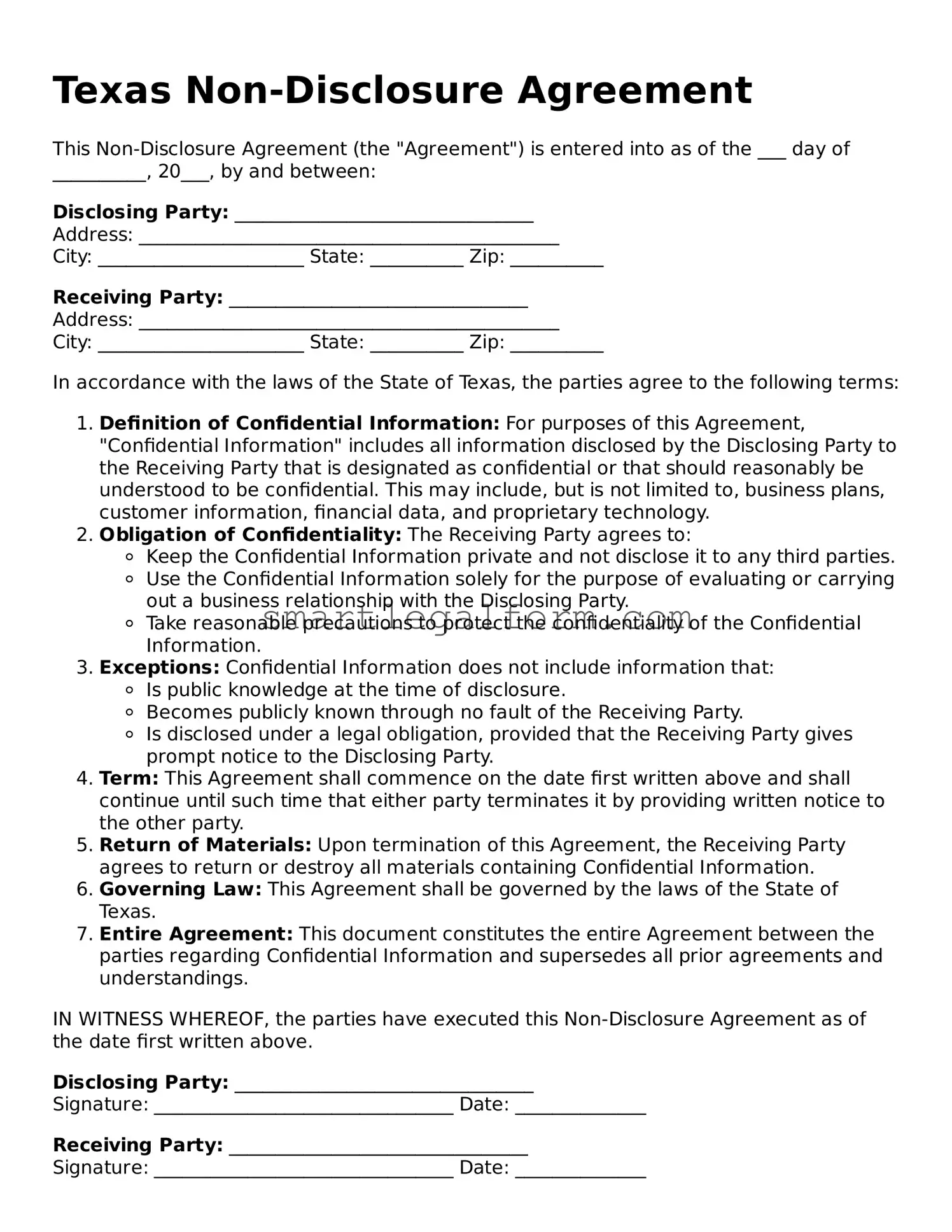Texas Non-Disclosure Agreement
This Non-Disclosure Agreement (the "Agreement") is entered into as of the ___ day of __________, 20___, by and between:
Disclosing Party: ________________________________
Address: _____________________________________________
City: ______________________ State: __________ Zip: __________
Receiving Party: ________________________________
Address: _____________________________________________
City: ______________________ State: __________ Zip: __________
In accordance with the laws of the State of Texas, the parties agree to the following terms:
- Definition of Confidential Information: For purposes of this Agreement, "Confidential Information" includes all information disclosed by the Disclosing Party to the Receiving Party that is designated as confidential or that should reasonably be understood to be confidential. This may include, but is not limited to, business plans, customer information, financial data, and proprietary technology.
- Obligation of Confidentiality: The Receiving Party agrees to:
- Keep the Confidential Information private and not disclose it to any third parties.
- Use the Confidential Information solely for the purpose of evaluating or carrying out a business relationship with the Disclosing Party.
- Take reasonable precautions to protect the confidentiality of the Confidential Information.
- Exceptions: Confidential Information does not include information that:
- Is public knowledge at the time of disclosure.
- Becomes publicly known through no fault of the Receiving Party.
- Is disclosed under a legal obligation, provided that the Receiving Party gives prompt notice to the Disclosing Party.
- Term: This Agreement shall commence on the date first written above and shall continue until such time that either party terminates it by providing written notice to the other party.
- Return of Materials: Upon termination of this Agreement, the Receiving Party agrees to return or destroy all materials containing Confidential Information.
- Governing Law: This Agreement shall be governed by the laws of the State of Texas.
- Entire Agreement: This document constitutes the entire Agreement between the parties regarding Confidential Information and supersedes all prior agreements and understandings.
IN WITNESS WHEREOF, the parties have executed this Non-Disclosure Agreement as of the date first written above.
Disclosing Party: ________________________________
Signature: ________________________________ Date: ______________
Receiving Party: ________________________________
Signature: ________________________________ Date: ______________
